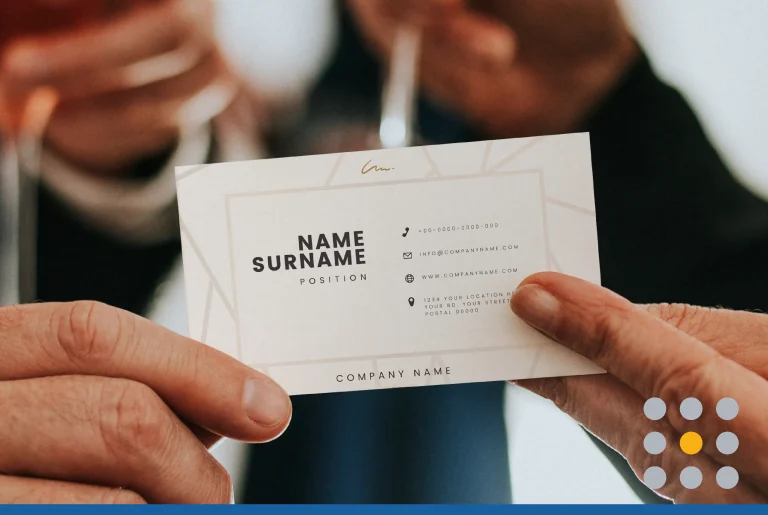There is no mistaking a strong brand identity. Some companies are instantly recognizable by just their logo and branding. Imagine a basketball player, mid jump. Imagine his legs spread wide and his arms outstretched, the front hand pushing the basketball towards a net you can’t see, but you know is close. What colors did you imagine when you created this image in your mind? Was it red and black?
No, we can’t read minds. But we do know that the Jumpman logo and brand identity is one of the strongest in the world. Nike and the Air Jordan team make sure that anytime you see their logo, it follows strict color, sizing and placement guidelines. They’re not the only ones. Most companies adhere to some version of brand identity guidelines. It drives recognition, loyalty and trust with consumers.
Creating your own branding guidelines is not difficult, but it does take time. If you want to build the same kind of loyalty and recognition in your community, here’s how to do it.
What is Brand Identity?
First, it’s important to understand the difference between brand guidelines and brand identity. Brand identity is the core of who your company is. It’s your vision for the future, the way you talk and present yourself. Think of your brand identity the way you think of your personal identity. It’s defined by what is important to you, who is important to you and what your goals are. Being specific about your brand identity will make it easier for you to be recognized by potential customers. It’s how you stand out amongst your competition.
What Are Brand Guidelines?
On the other hand, brand guidelines are a set of rules that dictate how your brand identity is expressed. Guidelines are the reason McDonald’s Golden Arches look the same, no matter which country you’re in. Their position, color and more are all outlined in the brand guidelines, so they are never altered or incorrect. Designers, copywriters and marketing teams use these guidelines to create everything from business card designs and advertisements to new promotional swag and website pages. Without guidelines, any creative professionals who work with your brand will have to guess what your identity is, causing it to potentially change over time.

How to Create a Brand Identity and Style Guidelines
With a clear understanding of the difference between brand identity and brand guidelines, you can begin to create both. Your team can work together to follow these steps, or you can partner with a professional designer to create your brand identity and guidelines. Either way, it’s helpful to have someone else to brainstorm with. Nothing is more important than your identity as a company.
1. Find Brands with a Strong Brand Identity
The first step is exploration. Find company logos and branding identities that you like. Go outside of your industry and within it. Look at company logos you’ve loved for decades and ones that you found in the last 2 years. Try to identify the common elements that you love from all the logos. Then, do the same with logos that you don’t like. When you’re working with a designer, it can sometimes be more helpful to provide instructions on what you absolutely do not want than notes on what you might like.
Once you have a clear direction of company logos and branding that you want to use as inspiration, it’s time to start defining your unique brand identity.
2. Define Your Values
Who are you as a company? What do you care about? What are the reasons customers should pick you over your competition? These are questions that will help define your values. The reason brand values matter is they help you establish a connection with your target customer. People want to purchase from companies who they feel represent things they agree with.
Values don’t have to be political or controversial. They can be as simple as “We close at 5 sharp every day because we want our employees to get home to their personal life.” Or “We take any and all returns, no matter how long it’s been since the day of purchase.”
The most important thing is that you’re very clear with all your values. They will attract the customer you work with most frequently, so you want to make sure they are honest.
3. Define Your Vision
Your vision is where you want your company to be in the future and what kind of impact you hope to make with your business. This might mean in the world or in your specific community. Like your values, your vision will give people an idea of what your business is all about. It can help connect you to the customers you want and keep you engaged for years to come.

4. Develop Your Visual Brand Identity
This step is the fun part. With your values and your vision clearly defined, plus a list of inspirational brands, you can start crafting your visual brand identity and what can be seen as the face of your company – your logo design. Again, this is something you can do on your own or work with a professional design team to create. During this phase, you’ll consider everything from your brand colors, typeface, spacing and more. Spend as much time considering your options as possible. You want to make sure that the colors influence customers the right way, the typeface is legible from various distances and that you can communicate your values clearly.
Logo Guidelines
An incredibly important part of your visual brand identity is your logo. As you finalize your logo, you want to create logo guidelines that are part of your brand guidelines. Logo guidelines will dictate all the normal things like color and font. But they also go a step further to explain spacing and positioning. If you work with a designer, they’ll give you options to choose from. But if you create your logo and guidelines on your own, remember to consider the different ways your logo will be used.
Test out different options on everything from clothing to stationery to websites and apps. Fit your logo in narrow spaces and wide spaces, small and large. Make sure that no matter where you have to put your branding, your logo looks good.
5. Determine Your Voice
Next, you want to figure out how you sound as a company. This part of your brand identity is more subtle than the visual elements but no less important. Identify words you want to use consistently — words like “trustworthy” or “playful” give you a unique identity that customers will gravitate towards. Also, mention words your company doesn’t use. Words like “impossible” or slang words are often cited in the “We Are Not” portion of brand guidelines. The voice and tone section of your brand identity might evolve over time, but as you start writing copy for different channels, it’s important to maintain consistency.
6. Finalize Your Branding Guidelines
Lastly, you will put all these decisions together in your brand guidelines. Usually, it’s no more than a 10-page document that outlines all the details a person would need to know to create an asset for your company.
Often, companies tie identity guidelines together with a brand story. That is, a short narrative about how you came to be, who you are and where you hope to go. Other companies you partner with or sponsor will use this piece of your brand identity to introduce you to their customers. It’s a convenient way to make sure your brand stays consistent to customers old and new.
Get Started On Your Branding with a Logo
If you’re ready to launch the visual look of your company, consider starting by creating your logo. You may choose to work with a designer to make your logo to exact specifications or create a logo yourself using our custom logo maker. We are committed to supporting your design needs as you work to establish your brand identity.







